ST. PETER’S CATHEDRAL BELFAST
HOMILY GIVEN BY
CARDINAL SEÁN BRADY
SUNDAY 17th FEBRUARY 2008
Your Eminence, my brother bishops, my brother priests, Reverend Sisters and Brothers, dear brothers and sisters in Jesus Christ
I thank you for your kind invitation to be here this evening and for your welcome. It is a great privilege to celebrate Mass in this beautifully reordered Cathedral of St. Peter’s, Belfast. I know that establishing this Cathedral as a vibrant centre of worship for the Diocese and for the city has always been a particular priority for you Bishop Walsh. It was, in keeping with your Episcopal motto, a real ‘work of the heart’. I congratulate you on the outstanding outcome. From its masterly choir, to its majestic spires and its far-reaching contribution to the life of Belfast and especially the lower Falls, we can say of St Peter’s with the psalmist: ‘This is a work of the Lord, a marvel in our eyes. Indeed we are glad’. We can also say with St. Peter in today’s Gospel, ‘Lord it is wonderful for us to be here. Let us build three tents.’ In other words, let us enjoy the gift of God’s presence – in people, word and sacrament, a presence so evident in the beauty and peace of this Cathedral, a presence which is life-giving, energising and transforming.
This presence is very evident, of course, in the practice of perpetual adoration of the Blessed Sacrament, a practice commended to us by Pope Benedict. There are so many graces which flow to individuals and to whole communities from adoration of the Blessed Sacrament. I commend Fr Kennedy and the other priests of the Cathedral for encouraging this particular devotion and I thank those many parishioners who ensure that, in the words of St. Paul, there is prayer ‘without ceasing’ in the company of the Risen Lord here in the centre of Belfast, here at the centre of Down & Connor.
I would also like to pay tribute to Fr Kennedy for his inspired decision to invite priests across the Diocese to come together in the Cathedral to pray on a monthly basis, to pray with each other and for each other. In my opinion, nothing could be more helpful or important at this time. As priests we need the prayerful support of each other and of those around us as we face the uncertainties and challenges of our priestly ministry. If we are to be gentle and faithful shepherds after the Lord’s own heart, then we need the prayerful support and solidarity with each other and with all God’s people. Most of all we need time with the Lord in prayer because without him we can do nothing. Without his intimacy, his love, his power working in us we can so easily become an empty vessel, or as St. Paul would say, a ‘gong booming, or a symbol clashing’. We can only address the spiritual hunger that is so evident in our society at this time if we ourselves have built a tent for God’s abiding presence in our own hearts and minds. We can only lead others to believe that it is ‘good to be here’ at Mass, that it is ‘good to be here’ with others as the Body of Christ. If we ourselves have taken to heart the words of the Lord: ‘Abide in my love. If you keep my commandments my Father will love you and we shall come to you and make our home with you.
When Jesus is at home within in us, we are also at home with ourselves. This is what Jesus meant when he said came to give us a peace which the world cannot give. That peace is what so many people in our world are looking for. When we have it, when it is within us, it can draw others to Christ because He is its source.
I was really pleased to receive the invitation to come here this afternoon. It gives us an opportunity to honour and celebrate and thank God for the many strong bonds that unite the diocese of Down and Connor and Armagh. One of these is, of course, our shared association with our National Apostle, St Patrick. Tradition has it that he worked as a slave in Slemish, came back as a missionary to Saul and that he is buried in Downpatrick. I love that part of his Confession where he speaks of praying as many as a hundred times a night and just as often in the day.
A sixteen year old boy in the quiet of the North Antrim hills, he had his own experience of God’s indwelling presence, a presence which like St Peter at the Transfiguration, he wanted to keep with him. He wanted to hold on to it like the pearl of great price. In the end, life was to take him far from the silence of Slemish – even the beauty of Ballymena!. When he met the Kings of Armagh, for example, things were not just as serene! But it is clear from the tradition of his famous breastplate that in all the many challenges which followed the deep sense of God’s abiding presence within and around him never ever left him –
Christ above me,
Christ below me,
Christ in the heart of everyone who thinks of me.
In fact it is clear that it was this knowledge of Christ within that was the source of his missionary zeal. It came from his habit of creating space to, in the words of our Gospel, to ‘listen to him’! To listen to the Beloved, in whom the Father is well pleased.
In the course of his preaching, Patrick ordained bishops to minister to the needs of the people. Among these was St MacNissi – whom Patrick had baptised and who founded the Church of Connor.
Malachy, a native of Armagh had to struggle against his own family to preserve the religious freedom of the Monastery of Armagh. He moved to Bangor where he set about restoring the ruined Abbey before being made Abbot. Next he became Bishop of Down and in 1129 he was appointed Archbishop of Armagh. Unable to take possession of his diocese for a number of years, he resided in Armagh for only three years as Archbishop before returning to the diocese of Down which obviously made him ore welcome than his own people in Armagh.
Patrick MacNissi Malachy
Their memory lives on. They are venerated as the heroes of our faith. They have a special place in our hearts. Their example inspires us. None of them had an easy life. Each one had his cross to carry. Like Abram, Patrick had to leave his country, his family and his father’s house for the land which the Lord would show him – this far of land of Ireland. In return, the Lord made him a great nation and blessed him and made his name famous.
Like Paul, Malachy had to bear hardships for the sake of the Good News – the hardship of conflict with his own kith and kin, the hardship of leaving home. But he too relied – not on his own achievements but on the power of God, who saved him and called his to be holy.
I am sure that the secret of their greatness was the same – their love which revealed itself in the service of both God and of their people and which was the result of a most intimate union with God.
Over the past 200 years the designs of providence have made Armagh even more indebted to Down and Connor. Archbishop Crolly came in 1835 and died in 1849 – a victim of cholera contracted in the wake of the Famine – and in the course of his heroic pastoral duties. He lies buried in front of the High Altar of St. Patrick’s Cathedral of which he was the founder and close to St. Patrick’s Grammar School, which he also founded.
Cardinal William Conway was appointed in 1958 and he died in 1977. He was the Archbishop of the Council and of all the reforms that ensued and of the canonisation of St. Oliver Plunkett. Armagh owes much to Cardinal Conway.
What a delight to see Cardinal Cahal Daly here today – my esteemed predecessor and who has proved such a wise guide and counsellor to me all these years. We rejoice to recall the valiant testimony of his 40 years as a Bishop, in three dioceses, in so many difficult situations. He has given to so many people – in the words of today’s Gospel – the courage to stand up and not to be afraid. Long may you continue to do so and as they say in Donegal – go mairfidh tu an céad! – may you live to be a hundred.
I am very grateful to all of you for being here today. When Bishop Walsh invited me to this Mass in honour of my being created a Cardinal I was a little anxious. I was conscious of that verse from the Thomas Carnduff’s, Songs of the Shipyards – called The Men of Belfast. It goes:
We are the men of Belfast,
Her sinew, marrow, and bone,
By the graft of our brain and muscle
We fashioned for her a throne;
And people, or lord, or parson,
Class, or creed, or clan,
It’s little we care for yer titles,
Unless you’re a Belfast man!
Of course, Cardinal William Conway would have passed this test coming as he did from these historic streets of west Belfast. Cardinal Daly, would have also held his head high, having worked as he did in Down and Connor, for so many years and who is now living in Belfast. But for a poor Archbishop of Armagh, who comes from Laragh in Co. Cavan originally, there was little hope. This is compounded by the fact that since becoming Archbishop of Armagh, an Irish Theologian of some renowned has written that there are too many dioceses in the Irish Church and that really Down & Connor should be the Archdiocese of the Northern Province and not Armagh.

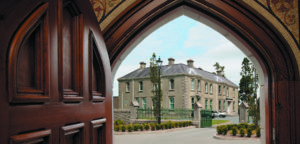
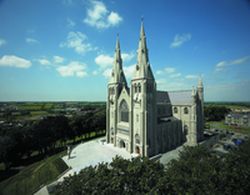
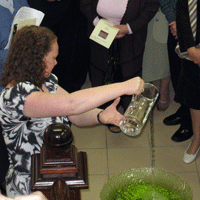 The Diocesan Pastoral Centre, first opened by Cardinal Daly in 1993, recently moved from Mount Oliver to the Magnet building in St. Patrick’s parish in Dundalk.
The Diocesan Pastoral Centre, first opened by Cardinal Daly in 1993, recently moved from Mount Oliver to the Magnet building in St. Patrick’s parish in Dundalk.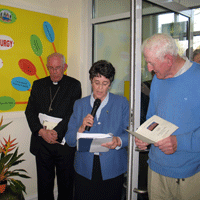 My Dream for all who use this lovely new centre now and in the future is that we will all be imbued with a new enthusiasm that will enkindle in our hearts and minds a loving compassionate creativity that will enable us to journey beyond our old limits toward new frontiers some of which are already emerging. The message of Jesus says this much more succinctly when He said ‘I have come that you may have life and have it to the full’.
My Dream for all who use this lovely new centre now and in the future is that we will all be imbued with a new enthusiasm that will enkindle in our hearts and minds a loving compassionate creativity that will enable us to journey beyond our old limits toward new frontiers some of which are already emerging. The message of Jesus says this much more succinctly when He said ‘I have come that you may have life and have it to the full’.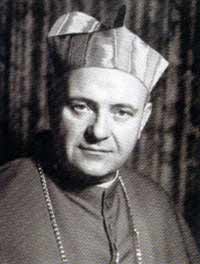
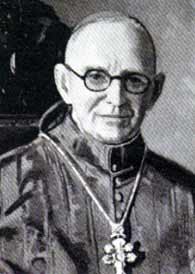
You must be logged in to post a comment.